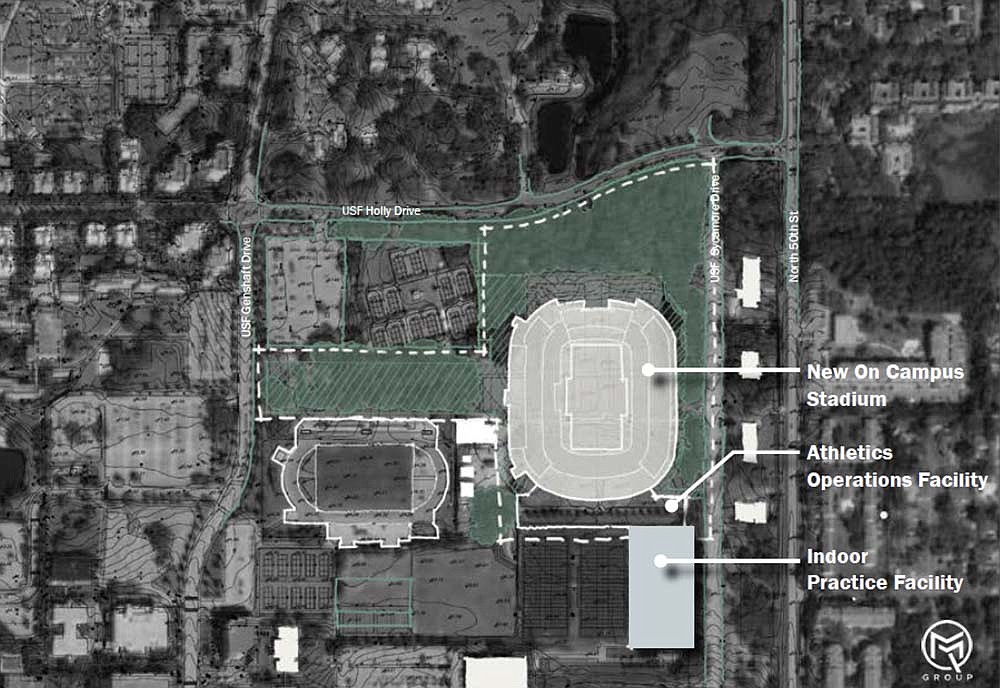- July 26, 2024
-
-
Loading

Loading

The University of South Florida’s Board of Trustees approved a funding plan Tuesday for a 35,000-seat on-campus stadium expected to cost $340 million.
The stadium, which is in the design phase, will be on the east side of the campus in an area known as Sycamore Fields, the university says. The plan is to move recreational fields and other small facilities in that area to other parts of the campus.
While having an on-campus stadium will be a major boost for USF’s football team and help it become more like traditional powers whose programs are closely tied with their university’s campus, USF has said it would be used all year.
A final vote count was not disclosed.
“There is incredible commitment and alignment from our university leadership to bringing a high-quality stadium to our campus,” Michael Kelly, vice president of athletics, says in a statement. “The approval by the Board of Trustees should instill great confidence from the USF community that we are going to build a ‘home’ that we can call our own, will attract the best and brightest and will continue the tremendous elevation of our athletics programs and entire university.”
With a funding plan in place, the long-discussed stadium is now scheduled to open by the fall of 2026 and the university’s football team could begin playing there soon after. The team currently plays its home games at Raymond James stadium, with the logos, flags and signage of the Tampa Bay Buccaneers covered by USF colors. While effective, not even the most loyal and myopic supporter would confuse it with an actual home stadium for the Bulls.
The plan approved by the trustees calls for the funding of the $340 million to come from several sources. The biggest of those is for the university’s financing arm, USF Financing Corp., to issue $200 million in debt. That money will be paid back using revenue from several sources, including operating revenue from the stadium and generated by USF athletics, according to the statement.
Payments on the remaining $140 million will come from:
“The University of South Florida is investing in our athletics programs in ways we never have before,” Rhea Law, USF’s president, says in the statement.
“The construction of an on-campus stadium is a complex endeavor that requires significant financial resources and thorough planning. We are very excited about the progress we are making on this long-awaited project, and we are grateful to our Bulls fans and the surrounding Tampa Bay community for their continued enthusiasm and support.”